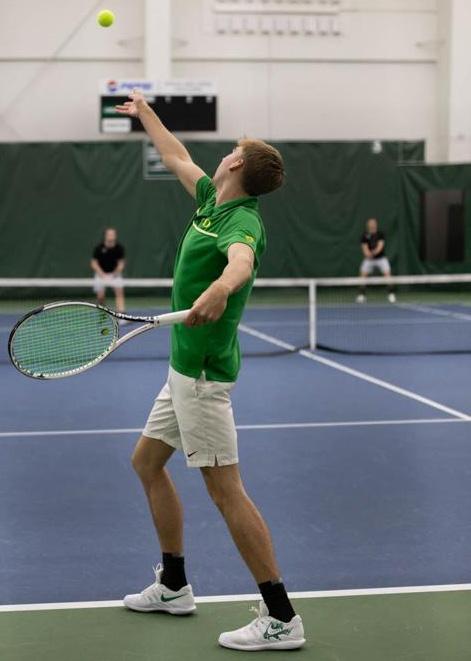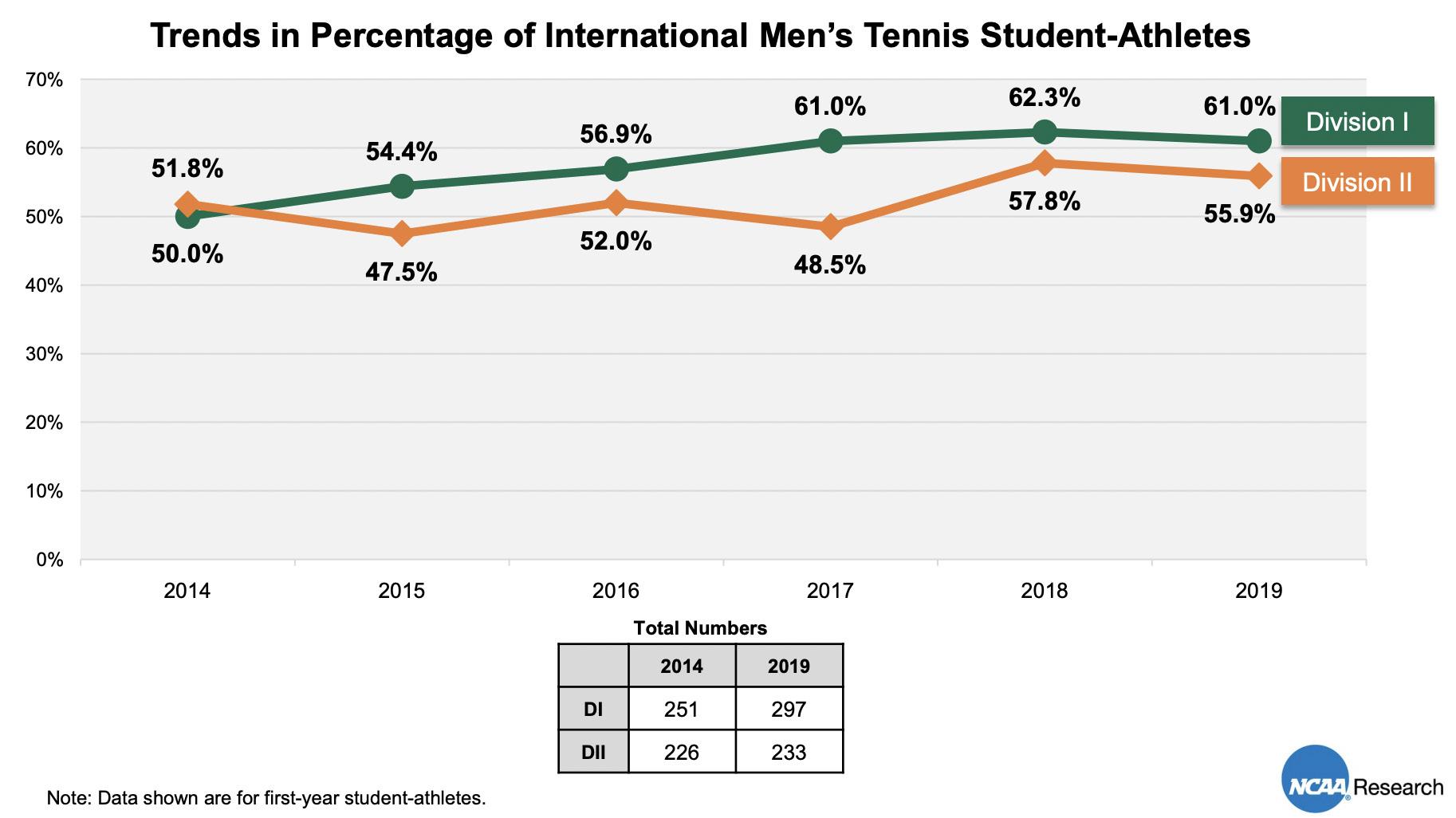
8 minute read
PAIGE SINICKI MAKES A STRONG FIRST IMPRESSION
Paige Sinicki making strong first impression for Oregon softball
BY MOJO HILL • TWITTER @MOJOHILL22
The freshman has settled in nicely, already making an impact in her initial taste of collegiate softball.
She hustles. She hits. She makes electric plays.
The Ducks have a new star on their hands. It comes in the form of a freshman who Oregon coach Melyssa Lombardi deemed “the female Pete Rose” before the season. She’s a young player who has come onto the college softball scene with fire and determination, led under the wings of the team’s experienced leaders.
Paige Sinicki wasted no time in proving her talent. She got the opening day start at third base and smacked a tworun single in her first collegiate at-bat.
“I feel like I was in a dream at one point, where I was in the dugout like, ‘Wow, we’re really playing Ole Miss,’” Sinicki said.
Sinicki collected six hits in her first nine collegiate at-bats, but it wasn’t just the bat that was impressive. She lived up to the “female Pete Rose” scouting report in an instant, stealing three bases in her first three games.
“She’s a hustler, and she’s a competitor,” Lombardi said. “Every single day, she shows up and gives it her all in everything we do. She never, ever lets up. And she just competes, and she makes the people around her compete.”
She also made impressive plays in the field, switching between third base and shortstop as needed. The Ducks are set at those positions with Rachel Cid and the return of Jasmine Williams, but now they’re arguably deeper on the left side of the infield.
Lombardi’s praise for Sinicki continued: “She’s excellent on defense. She’s explosive at the plate. She’s got great speed.”
After an impressive first three games, Sinicki fell back to Earth. She went 0-for-5 against UC San Diego on Feb. 12 as part of a 1-for-14 stretch.
But a massive opportunity revealed itself on a silver platter for Sinicki on Feb. 18. The Ducks had a doubleheader against Baylor and were coming off their first loss of the season earlier that day. Sinicki had yet to collect a hit in either game. She came up to the plate in the sixth inning with two on and one out: Oregon leading 3-0 — a chance to break it open.
She delivered, smacking her first career home run over the left-center field fence.
“It’s just an amazing feeling to go back to home plate with all my teammates,” Sinicki said of the homer. “It was just awesome.”
Sinicki’s passion and energy in the field stems from her love of the game. She said simply being on the field with her teammates fires her up and that she would “go through a wall” for any of them.
“I’ve always been that player that would go for it, and I think it’s helped me become the player I am,” she said.
For Sinicki, the key to settling in at the college level has been to slow the game down. She does this with the help of her teammates — players like Cid, Williams, Terra McGowan, Allee Bunker and Brooke Yanez who have helped ease any nerves.
“I’ve been playing with these girls for a couple months now, and I’ve been really able to pick their brains and really get to learn so much from them,” Sinicki said.
The leaders on the team have aided her in various ways.
“[Williams] has helped me slow down the game, being on the left side with her,” Sinicki said. “And [Bunker], telling me to keep on top of my schoolwork and softball, I think that’s helped…. [McGowan] can just look at me, and she’s like, ‘Just breathe,’ and I’ll breathe at practice and zone back in.”
Sinicki does more than just zone back in, hustling and going hard on every play. When she’s out in the field, she’s locked in and has her sights squarely set on winning.
“Paige just goes for it,” Bunker said. “She has zero fear for her safety sometimes.”
The Ducks — “Version 4,” as they’ve dubbed themselves — still have a long way to go this season. Sinicki has already proven she belongs.
Now, it’s just about reminding herself what she’s been preaching since day one.
“If I can just slow it down and keep having fun with my girls, and just keep supporting each other, it makes the game really slow down,” Sinicki said.
It’s just an amazing feeling to go back to home plate with all my teammates. It was just awesome.”
PAIGE SINICKI Oregon Softball player

(Courtesy of Scott Boldt)
WHY IS DIVISION I TENNIS INTERNATIONALLY DOMINATED?
NCAA Division I tennis has the highest percentage of international student-athletes, and there’s a multitude of reasons why.
BY GABRIEL MARVIN
Out of the nine student-athletes on the University of Oregon’s men’s tennis team, five have 10-hour plus flights when they make a trip back home.
It has become increasingly common for international students to venture to the United States in pursuit of competing in NCAA Division I athletics, and tennis is a sport that has seen its international presence increase dramatically over the past decade.
More than a handful of teams’ rosters only have one American. This trend has become increasingly popular; between 2014 and 2019, the percentage of first-year international students on men’s Division I tennis rosters jumped from 50% to 61%, according to NCAA Research.
International players have proven why tennis coaches and recruiters at UO, and so many other colleges, have traveled great distances to ensure these individuals compete for their teams.
Among the top four ranked singles players on Oregon, three hail from outside the U.S.
The limited alternatives available to overseas tennis prospects correlates to the amount of international prospects choosing to play in the U.S.
Take senior and No. 1 singles player for the Ducks Joshua Charlton, for example.
“It’s a tough decision because if you’re not going to college you have to back yourself up and play low-level professional tournaments,” Charlton said. “But that’s tough to do, when you’re 18; you need to build up your body and build up your game.”
Charlton came to Oregon from Australia when he was just 18 and even admitted that some alternatives offer a comparable level of competition to men’s Division I tennis.
“I think the level of Division I is just unreal,” Charlton said. “You have a lot of the top players in college who when the season ends, are going out and playing professionally.”
There are some adjustments international student-athletes have to make when coming to the states for the first time. Head coach Nils Schyllander understands these adjustments and the apprehension that comes with them because he was in their shoes when he was a teenager coming from Sweden to play tennis at Northern Arizona University.
“Having him, who’s experienced that before, they know what it’s like when you’re missing home and being a part of a new culture, and you can feel so isolated sometimes,” Charlton said.
Sophomore Swede and No. 4 singles player for the Ducks Jesper Klov-Nilsson noted the importance of a coach like Schyllander, who is from his home country, and how it affected his recruitment.
“I wanted to make my own decision, but at the same time he made a pretty big impact,” Klov-Nilsson said.
Oregon’s men’s roster is more than half international and are just one of hundreds of NCAA Division I teams that have a roster majority of international student-athletes.
Something can be said about the correlation between the

Ducks junior Joshua Charlton throws the ball up for a serve. Oregon Ducks men’s tennis take on Portland State Vikings at the Student Tennis Center on Feb. 6, 2021. (Maddie Stellingwerf/Emerald)
Jesper Klov-Nilsson, sophomore, prepares to serve. The University of Oregon’s men’s tennis team defeated Stanford 4-2 on April 16, 2021. (Will Geschke/Emerald) highest ranked American professional tennis players and their decision to go to college or turn professional. Out of the top 10 ranked American tennis players, only four of them chose to play collegiately.
Looking at the last five NCAA championship teams, only one of them (Texas in 2019) had half of its roster made up of foreign athletes. It would make sense that recruiting only international prospects likely results in higher championship odds, but when fighting for a team title, where someone is from doesn’t matter.
The increase in international student-athletes has a huge impact on the chances for high school tennis players in the U.S. to make a Division I roster. According to Scholarship Stats, a high school tennis athlete in the U.S. has a 0.6% chance of making a Division I roster.
With some teams like TCU, whose roster is made entirely of international student-athletes, many talented high school prospects don’t stand a chance of getting a scholarship.
Regardless, the path to NCAA Division I tennis isn’t any easier for foreign prospects. Student-athletes like Oregon junior and No. 3 singles player Ivailo Keremedchiev mentioned the difficulty of getting recognition when he played in his native Bulgaria.
“[In Bulgaria] they have a national sports academy, but it’s not very good — they only have 20-30 decent players over there,” Keremedchiev said. “It’s a very poor education level. So that’s why I wanted to get away from there.”
With the takeover of international student-athletes in college tennis, it would be hard to deny the improvement of competition level compared to a decade earlier.
The limited opportunities, improvement of competition and difficulty of even making it to the Division I level highlight why tennis has become one the few NCAA sports that is dominated by nonamericans.




